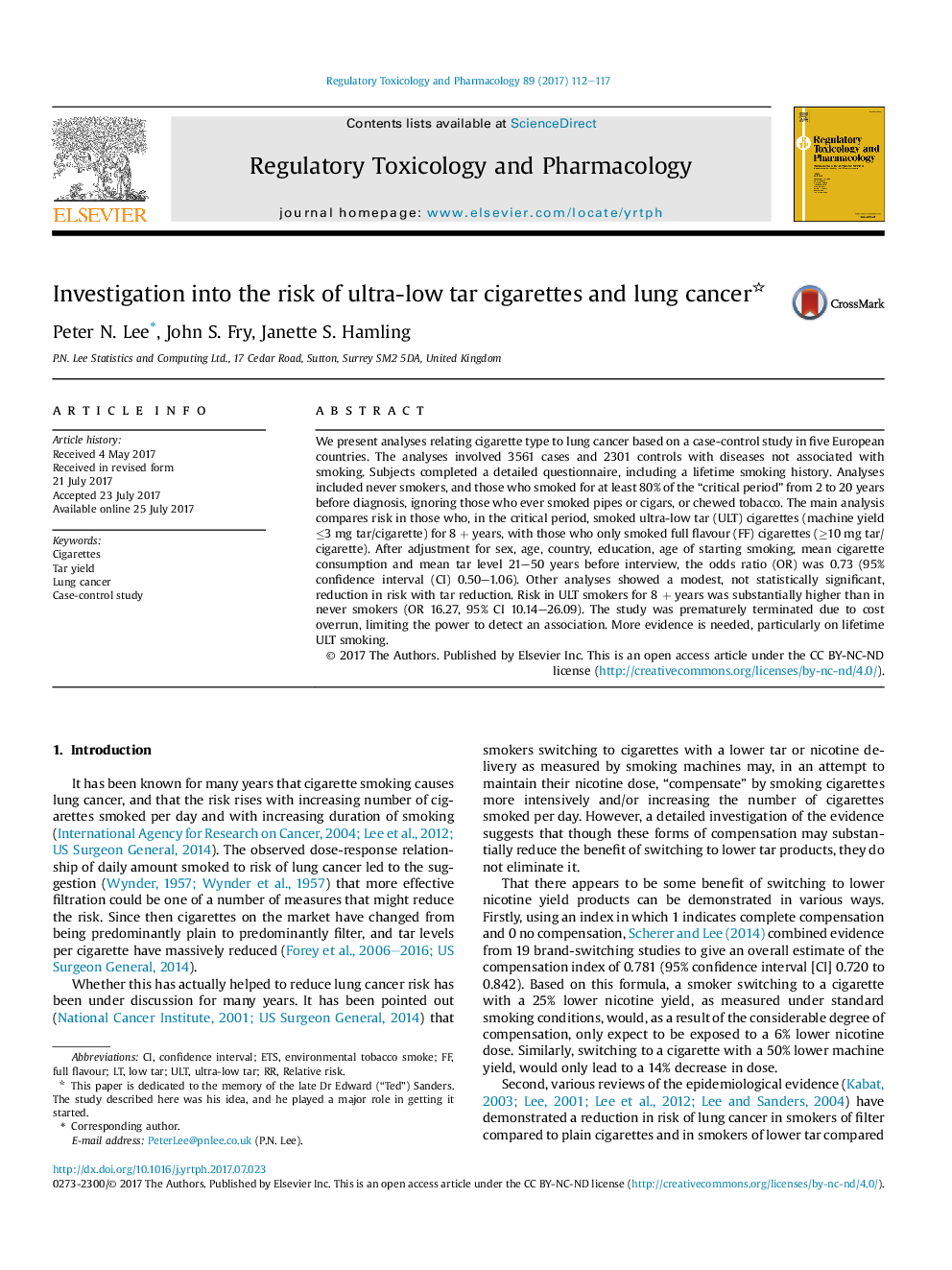| Article ID | Journal | Published Year | Pages | File Type |
|---|---|---|---|---|
| 5561206 | Regulatory Toxicology and Pharmacology | 2017 | 6 Pages |
â¢No previous data exists on lung cancer risk from ultralow tar (ULT) cigarettes.â¢We analysed data from a large study involving 3561 cases and 2301 controls.â¢Smokers of ULT (for 8 + years) and full flavour cigarettes were compared.â¢The confounder-adjusted odds ratio was 0.73 (95% CI 0.50-1.06).â¢More data are needed to clarify effects of longer term ULT smoking.
We present analyses relating cigarette type to lung cancer based on a case-control study in five European countries. The analyses involved 3561 cases and 2301 controls with diseases not associated with smoking. Subjects completed a detailed questionnaire, including a lifetime smoking history. Analyses included never smokers, and those who smoked for at least 80% of the “critical period” from 2 to 20 years before diagnosis, ignoring those who ever smoked pipes or cigars, or chewed tobacco. The main analysis compares risk in those who, in the critical period, smoked ultra-low tar (ULT) cigarettes (machine yield â¤3 mg tar/cigarette) for 8 + years, with those who only smoked full flavour (FF) cigarettes (â¥10 mg tar/cigarette). After adjustment for sex, age, country, education, age of starting smoking, mean cigarette consumption and mean tar level 21-50 years before interview, the odds ratio (OR) was 0.73 (95% confidence interval (CI) 0.50-1.06). Other analyses showed a modest, not statistically significant, reduction in risk with tar reduction. Risk in ULT smokers for 8 + years was substantially higher than in never smokers (OR 16.27, 95% CI 10.14-26.09). The study was prematurely terminated due to cost overrun, limiting the power to detect an association. More evidence is needed, particularly on lifetime ULT smoking.
